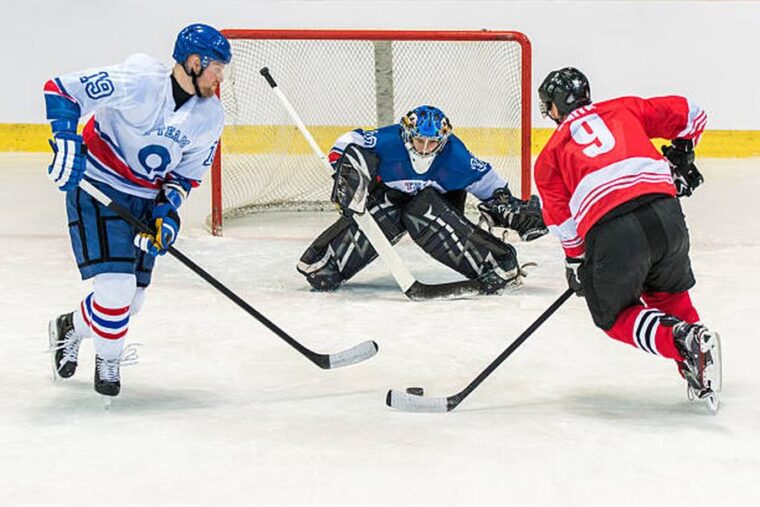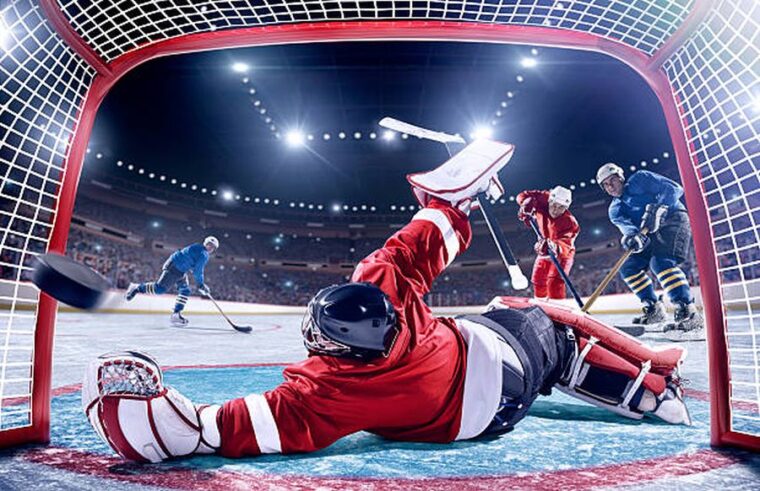Online wagering and sports betting are nothing new, and people have been wagering on several sports and matches since decades ago. As of now, many people are showing interest in hockey betting.
Are you a beginner to hockey wagering and want to set a wager on the upcoming match? In that case, check out https://www.gambleusa.com/, which has a decent list of hockey betting sites and other crucial information you need to know prior to starting the wagering.
Explaining Most Popular Hockey Betting Types
There are different types of hockey settings. While some wager types are easy, others are a bit tricky. We have listed the most popular hockey betting types here:

-
Moneyline
Moneyline is popular because it is simple, and the wager is on who will win the game. In hockey, gamblers can choose between betting on the favourite depicted by a negative number or the underdog indicated by a positive number.
-
Puck line
Puck line or point spread bet is another frequently placed wager on hockey matches. In hockey, the puck line is fixed at + or -1.5 goals, and the question is to guess who will win.
-
Over/Under
It allows you to wager on whether the combined score of both teams will be higher or lower than the indicated score. There are no ties when the half-point is reached.
-
In-play bets
It is putting wagers on live games. The betting lines tend to change frequently, based on the activity in the field.
-
Prop bets
It indicates wagering on certain items. There are numerous options to bet on, and the prop wagers are not available on all gambling sites.
Here, we have included all the terms and glossaries you might encounter in hockey wagering.

-
Underdog
According to the odds, the team with the least chance of winning.
-
Favourite
According to the odds, the team with the best chance of winning.
-
Chalk
Another term for favourite.
-
ROI
Return on Investment (ROI) is a term that refers to the amount of money. It is a method of calculating the money you win per every dollar wagered. A return on investment of 2 to 3% is incredible in hockey wagering.
-
Edge
On a wager, the edge is the benefit you speculate you have. For instance, you get a 10% edge if you believe you have a 60% chance of winning a wager, but with 50/50 odds.
-
Bankroll
The bankroll is the total funds you kept aside for wagering and are willing to risk.

-
Betting unit
It is a portion of your bankroll that you employ as a regular wager, usually 1 to 2 %.
-
Juice/Vigorish/Vig
A sportsbook’s commission on a wager, and it is incorporated in the betting line.
-
Value
The advantage you have on a wager is referred to as value. If you see an underdog paying far more than you believe it has to, then the underdog is worthy.
-
Reduced Juice
When the commission (juice or vigorish) of a sportsbook is lower than the industry average.
-
Dime Line
When there is a 10 “cent” difference in commission between the odds on both sides of a wager. For instance, -130 and +120.
-
Sharp Money
It is slang that indicates who the professionals are wagering on.
-
Hedge
Wagering the opposite side of an earlier bet, usually to ensure a profit. If you gamble on Team A to win the match at +1000 and when they reach the final, you can change it by wagering on Team B at even odds.

-
Kelly Criterion
A wagering method in which the size of your bet is determined by how much of an edge you think you possess. With the Kelly Criterion, you can wager 5% of your bankroll on an event where you retain a 10% edge and 3% on a game where you have a 9% edge.
-
Flat Betting
It involves putting the same amount of money on each game.
-
Line Movement
When there is a change in the game odds, it is referred to as line movement. It could be because of a player’s injury, suspension, or others. In addition, it might also be the oddsmakers’ attempt to equalize the wagering.
-
Reverse Line Movement
When a large number of individuals wager on one team, but the line moves in the opposite direction. It implies that the huge (sharp) money is wagering against the vast majority of individuals.
-
Cover
When one team ‘beats’ the wagering line, it is known as a cover. For example, if a +1.5 underdog lost by a single goal or a -1.5 favourite won by two goals, the puck line has been covered (spread).
-
Push
When the ultimate score is on the wagering line and both the teams did not cover the spread. The money is reimbursed if the wager pushes.

-
Proline
A common term for Canadian provincial sports lotteries in which you must correctly predict the outcomes of various separate games in order to win. Sports Action, Sports Select, and Mise-O-Jeu are three other provincial sports lotteries.
-
Limit
A limit is the maximum money that will be accepted by a sportsbook on a single wager. In general, online sportsbooks often approve wagers in the thousands of dollars, whereas provincial sports and Proline lotteries normally limit gamblers to $100 per ticket.
-
Against the Spread
Measuring a team’s record with the betting line (puck line) instead of wins and losses.
-
Bad Beat
When a wager that should have won fails to do so. For example, it is like wagering on the under 5.5 in a hockey game and losing on an empty netter within the last few seconds.
-
Steam
When the betting line swings abruptly in one direction, it is generally a sign that a lot of money is wagering on one side or outcome.

Bottom Line
We have listed down all the essential and even most common betting terms and glossaries used in hockey wagering. So, it is better to have a quick look and understand them before you start gambling on hockey matches. As a result, you can avoid confusion while wagering even if you are a beginner.
